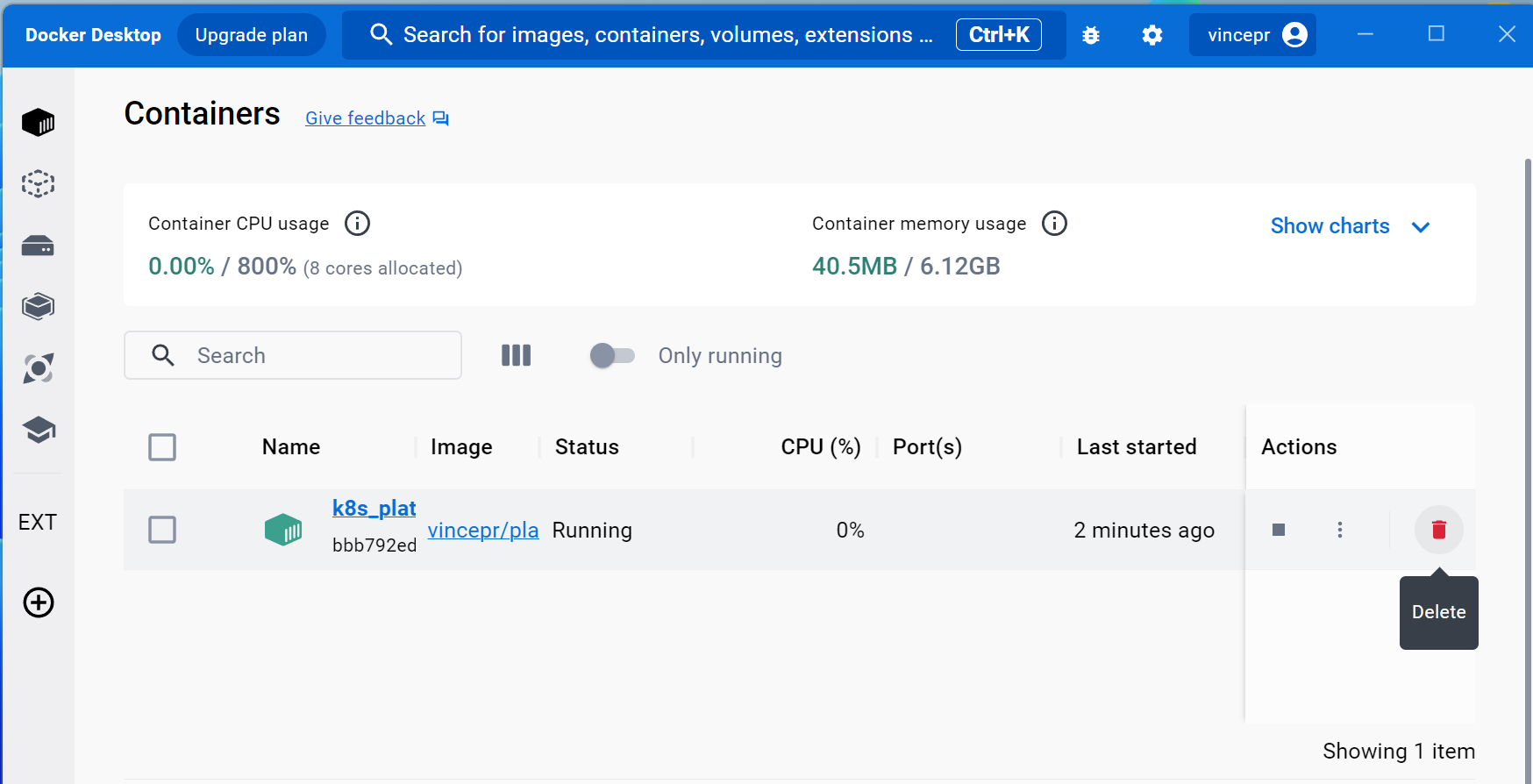part3 - Kubernetes - aka K8S
what we want out of kubernetes
Kubernetes is our Container-Orchestrator, making sure everything is running as it should
- containers get spun up in the right order
- make sure containers continue to run (ex after a crash)
- scales in the right way
Notes on Architecture
Cluster - a group of servers/VM's that we run on. In this case we just have our desktop as our one Cluster we run everyhing on.
Node - Splits up our Cluster into more parts. Ex. in Azure/Google-Cloud we might end up with different nodes we run our stuff on. In this project we just use one Node.
Pod - Is used to host and run Containers. A pod can in theory run multiple containers. We will use just one Pod per service. (we only have 2 of those anyways)
Kubernetes Services
Services that Kubernetes provides for us:
Node Port - used only for development purpose. Quickly maps a internal port and makes it accessible for us on our dev desktop machine.
Cluster Ip(-Service) - Attatches to a Pod and again Maps Ports from inside the container to ones inside our Node/Cluster. Only used for container to container communication.
Ingress Nginx Controller - a API Gateway. (the proper way to make our Endpoints accessible, replacing our dev only NodePort). This connects directly with the Pods (not trough the Cluster IPs)
Ingress Nginx Load Balancer - Connects our API Gateway to the outside
Persistent Volume Claim - since everything (but the SQL DB) is stateless we must use a persistent volume. This will make our DB persist trough Reboots etc...
creating our first deploymend
platforms-depl.yaml
apiVersion: apps/v1
kind: Deployment
metadata:
name: platforms-depl
spec:
# replicas are basically horizontal scaling (ex multiple api containers that run at the same time etc...)
replicas: 1
# selector and template are defining the template were creating
selector:
matchLabels:
app: platformservice
template:
metadata:
labels:
app: platformservice
spec:
containers:
## we use our previously created docker containers here
- name: platformservice
image: vincepr/platformservice:latest
- we start DockerDesktop and make sure our Kubernetes is running
kubectl version
cd K8s
kubectl apply -f platforms-depl.yaml
kubectl get deployments
# NAME READY UP-TO-DATE AVAILABLE AGE
# platforms-depl 1/1 1 1 32s
kubectl get pods
# NAME READY STATUS RESTARTS AGE
# platforms-depl-85677fb59d-nx2zq 1/1 Running 0 77s
- if we check our running containers in VscodeExtension,
docker psor in DockerDesktop now there should up our (by Kubernetes managed running container:vincepr/platformservice@sha236......)
Kubernetes has a desired End State
 When we now stop or delete our container. Kubernetes will do it's best to get back to the desired state. In this case coming back to
When we now stop or delete our container. Kubernetes will do it's best to get back to the desired state. In this case coming back to replicas: 1. So it will instantly start a new container back up.
To shut it down for good:
kubectl get deployments
kubectl delete deployment platforms-depl
Creating the Node Port
platforms-np-srv.yaml
# our NodePort (for devironment only) to quickly connect into our Cluster/Node
apiVersion: v1
kind: Service
metadata:
# the name of it when we work at the command line:
name: platformnpservice-srv
spec:
type: NodePort
# the NodePort needs to know what Pod it is targeting to
selector:
app: platformservice
ports:
- name: platformservice
protocol: TCP
port: 80
targetPort: 80
- then we start it
kubectl apply -f ./K8S/platforms-np-srv.yaml
kubectl get services
# NAME TYPE CLUSTER-IP EXTERNAL-IP PORT(S) AGE
# kubernetes ClusterIP 10.96.0.1 <none> 443/TCP 24h
# platformnpservice-srv NodePort 10.103.51.73 <none> 80:30085/TCP 36s
- now we can Postman http://localhost:30085/api/platforms and it will reach into the container, that is maintained by kubernetes
